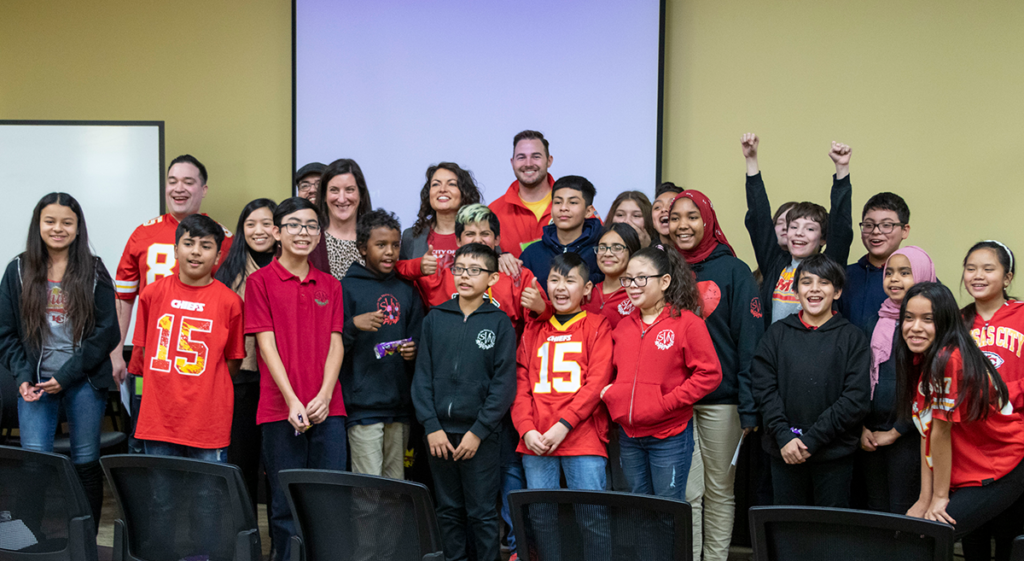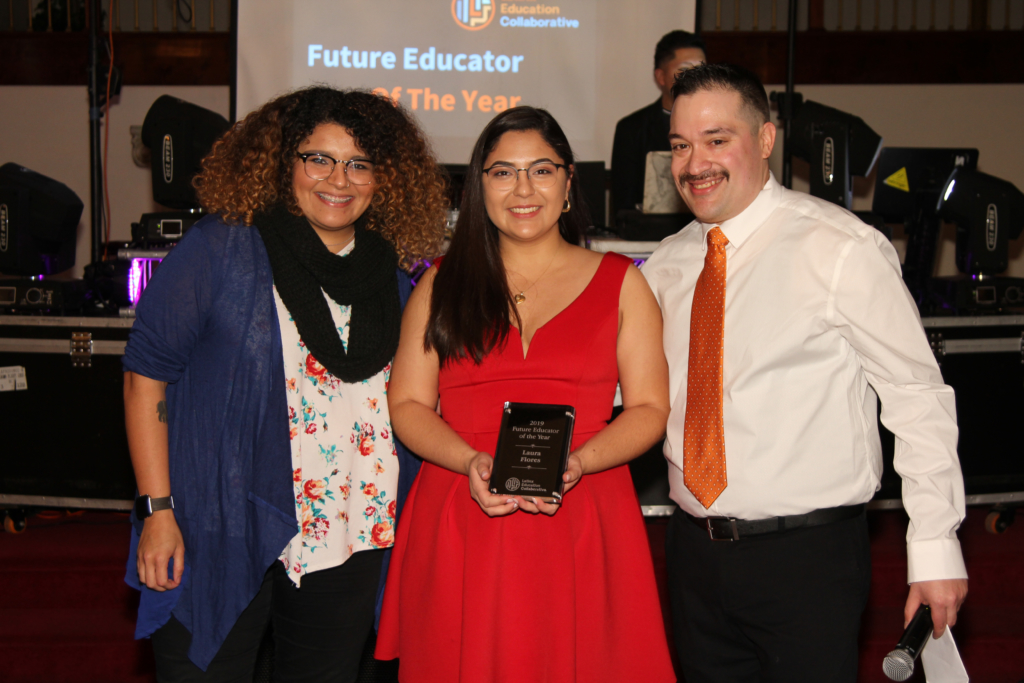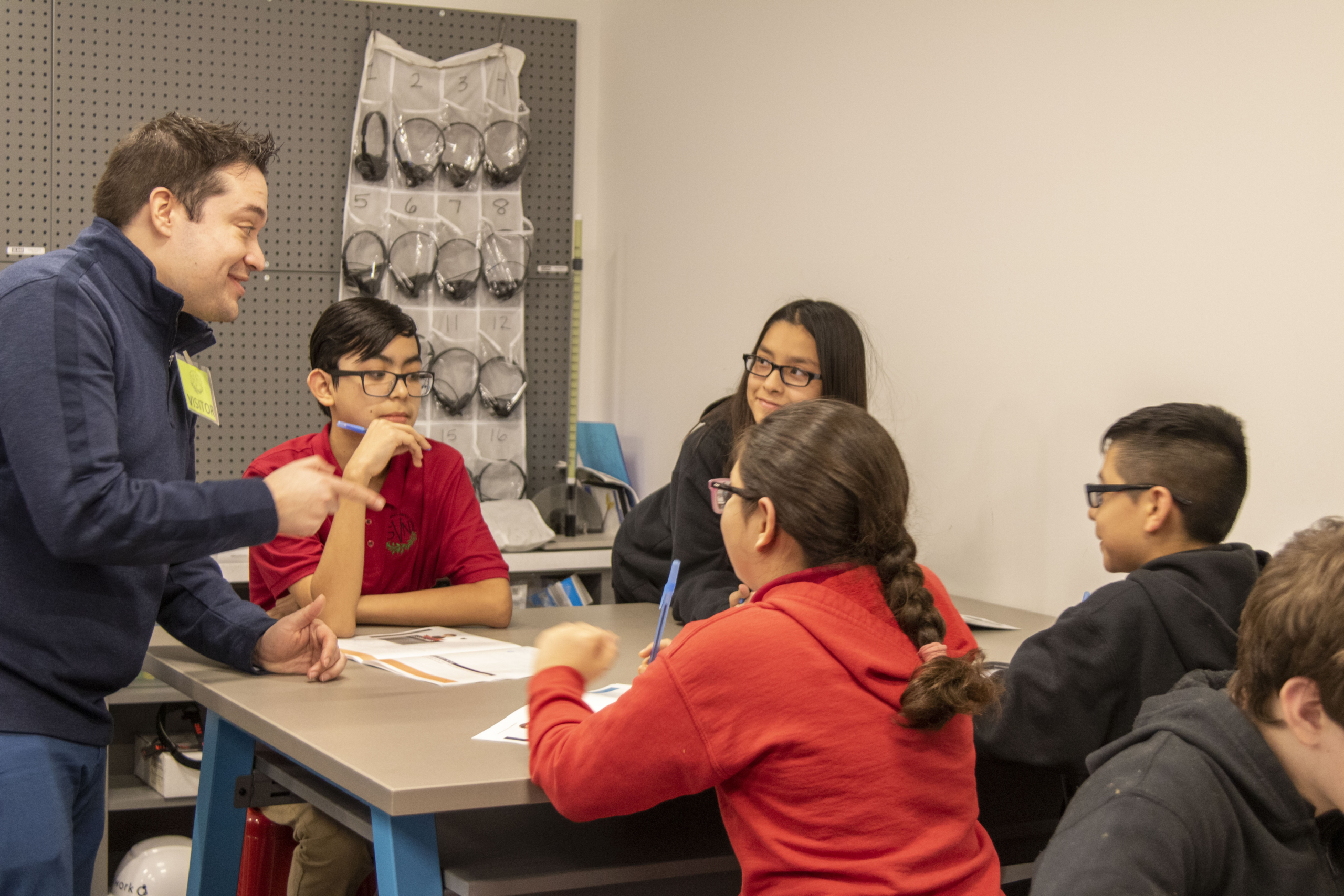In Kansas City, Missouri, like in much of the country, the teaching profession is not as diverse as it should be. For every 200 Latinx students in the Kansas City area, there is only 1 Latinx teacher.
Edgar Palacios founded Latinx Education Collaborative on the belief that representation matters. Teachers of color can enhance academic outcomes for young people, especially students of color. Since 2018, with funding and support from NewSchools, his organization has been working to recruit Latinx prospects to credentialing programs in the local region, connect certified educators to open positions, and retain current teachers through culturally responsive professional development.
We talked with Palacios to find out what made him take the leap into social entrepreneurship and what his organization is doing to build a thriving community of Latinx educators and influential system leaders. The interview has been edited for clarity and concision.
How did you become aware of the lack of diversity in the teaching profession?
In my previous role, I had the opportunity to travel and visit different schools. Once, I walked into a school with 99.9% Latinx students and not one teacher of color. It’s something I noticed time and time again that was starting to eat away at me.
Why were there no educators of color at these schools?
One principal told me that it was hard to find educators of color in a competitive environment. But I thought that the real problem was with what the principal said next: ‘We can teach anybody to teach, but they have to be a good culture fit.’ I thought, ‘If you can teach anybody to teach, then why aren’t you teaching more Black and Brown folks to become teachers?’ And when someone says ‘You have to be a good culture fit to teach,’ whose culture are we talking about?
What were Latinx teachers telling you?
I found it interesting that for many Latinx teachers, isolation is a main reason they don’t feel sustained in the work. I expected the reason to be their pay. But it’s because often they are the only Latinx teachers at their schools. They become the ‘Chief Latino Officer’ or the ‘Chief Translator.’ Everything that’s related to the Latino community they have to handle. I could really empathize with that feeling of isolation and not belonging based on my own journey growing up.

What experiences made you feel like you didn’t belong?
Growing up in Miami, I never felt like an outsider. I never felt othered. Miami was a place where I could speak Spanish at school and nobody would bat an eye. That all changed when my family moved to Spokane, Washington. I remember my first day in sixth grade sitting next to a girl who told the teacher, “I don’t want to sit next to a dirty Mexican.” I was confused: I’m not Mexican. My parents are actually from Nicaragua. They came to this country as immigrants fleeing the civil war. I also took a shower that day. So there was no reason to call me any names. But at the time I didn’t understand these things and the teacher didn’t address it. It was one of many such incidents that happened to me along the way.
Is this what sparked the idea for Latinx Education Collaborative?
What I’ve learned is that there are a lot of little Edgars in places like the Midwest where they don’t see themselves in their teachers. They don’t see themselves reflected in important leadership roles. This is not a problem that’s going to magically solve itself.
I had this idea that there had to be a space where Latinx teachers could come together, commiserate, share resources, and build community because that’s crucial for the work.
How are you supporting Latinx teachers to remain in the field longer?
Our retention work is a mixture of coaching and convening. We use Clifton Strengths as a tool to get educators to know their strengths and as a framework for how they can survive and thrive in schools. We’re also bringing people together around topics of interest and the needs they have and we try to fill those gaps with professional development tailored to them. We’re also focused on providing recruitment support to local schools. We help them build cultures that will attract and retain Latinx educators.
You are focused on developing pathways to teaching as well. How are you doing that?
We love talking to middle school students about becoming teachers one day. Teaching was never an option I considered when I was growing up. My options were to be an attorney, a doctor, or an engineer — someone who makes money. Now we are starting to change that narrative within our own community and we’re getting students excited about becoming teachers. We’re working to scale this program to the high schools to start building bridges between those transitional years and so we can keep reminding students that they should consider teaching as a career.

What difference have you seen since you launched Latinx Education Collaborative?
We’ve been able to reach people beyond Kansas City; educators from small towns across the Midwest who now engage with us on a regular basis because they’re missing resources in their neck of the woods. We’re thinking about how we can encourage them to start their own local initiatives. We also released a report that started a conversation about the fact that only 1% of teachers in the Kansas City metro area are Latinx. We’ll use this baseline data to measure our impact and refine our strategies moving forward.
What support has been critical for your organization to become sustainable?
Obviously, the funding is great, but what is even more valuable are the additional layers of support from NewSchools. I have received technical assistance. I have been able to build relationships with other venture leaders. And I have a relationship manager who provides coaching support.
Did you ever see yourself as the leader of an organization doing this work?
I remember thinking, ‘One day I will have my own organization, maybe one day that’s a possibility.’ But it seemed so far away from my reality early on in my career. A year later, the Teacher Diversity funding opportunity came up. When I saw it, I was like, ‘That one is for me. That’s my opportunity right there.’
Photos courtesy of Latinx Education Collaborative.
